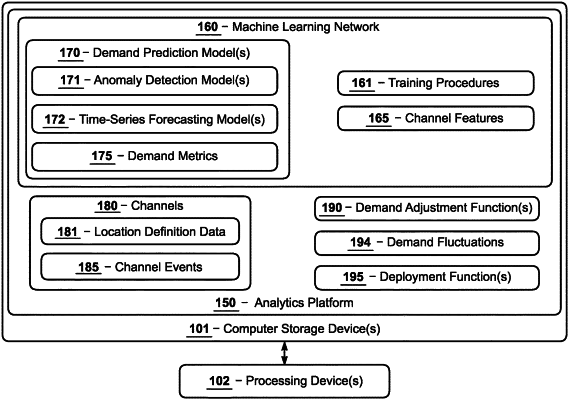| CPC G06N 3/088 (2013.01) [G06N 3/0442 (2023.01); G06Q 10/087 (2013.01); G06Q 30/0202 (2013.01); G06Q 30/0206 (2013.01)] | 24 Claims |

|
1. A system comprising:
one or more processors; and
one or more non-transitory computer-readable storage devices storing computing instructions configured to run on the one or more processors and cause the one or more processors to execute functions comprising:
providing access to an analytics platform that includes a machine learning network configured to predict demand metrics for a plurality of channels;
receiving, by the analytics platform, channel events pertaining to a channel;
generating a plurality of channel features based, at least in part, on the channel events; and
predicting, using a demand prediction model associated with the machine learning network, a demand metric for the channel based, at least in part, on the plurality of channel features;
wherein:
a demand adjustment function is executed that adjusts prices or allocations of one or more inventory items in the channel based, at least in part, on the demand metric;
the demand prediction model associated with the machine learning network includes an anomaly detection model that generates the demand metric based on current conditions of the channel;
the anomaly detection model includes a classification model that is pre-trained using a supervised training procedure to generate the demand metric;
a training data set is utilized to train the classification model to generate the demand metric;
the training data set comprises a plurality of training feature vectors, each of which comprises sample channel features; and
each training feature vector is annotated with a demand indicator label identifying a demand associated with the training feature vector based on the corresponding sample channel features included in the training feature vector.
|